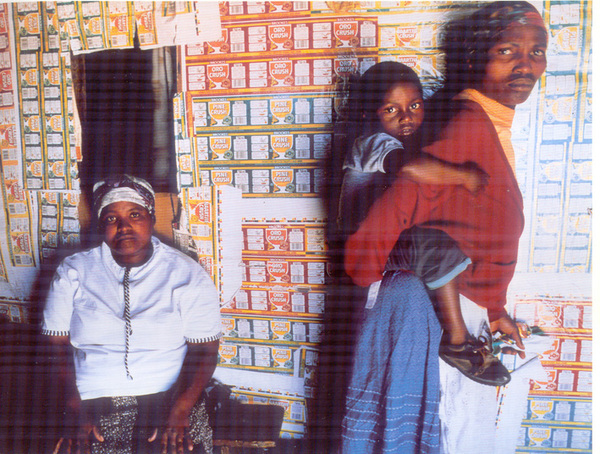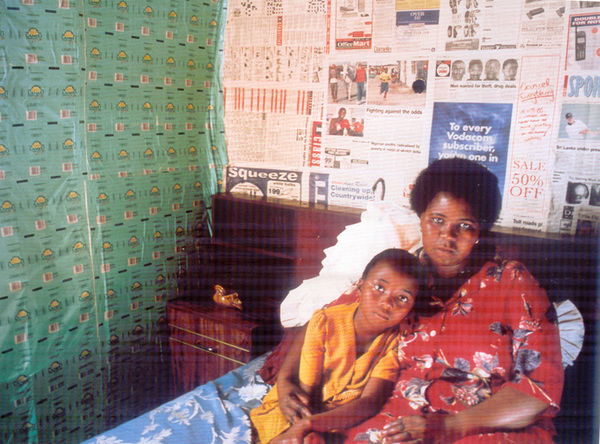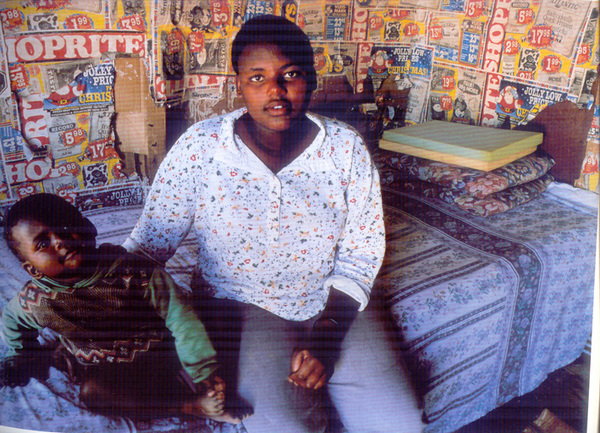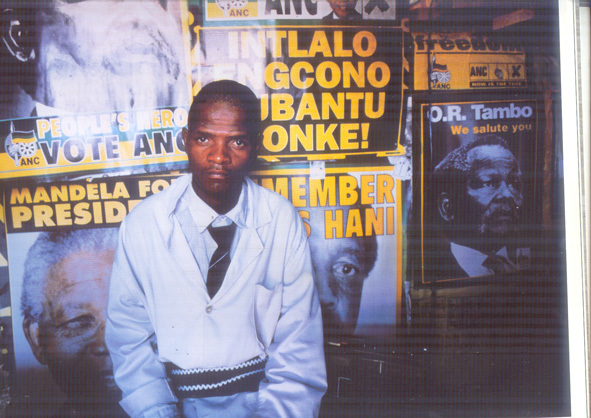
Untitled (from the series Sacred homes). Colour photography mounted on methacrylate with aluminium frame. 170 x 120 cm. Edition of 3. |

Untitled (from the series Sacred homes). Colour photography mounted on methacrylate with aluminium frame. 170 x 120 cm. Edition of 3. |

Untitled (from the series Sacred homes). Colour photography mounted on methacrylate with aluminium frame. 170 x 120 cm. Edition of 3. |

Untitled (from the series Sacred homes). Colour photography mounted on methacrylate with aluminium frame. 170 x 120 cm. Edition of 3. |
Zwelwthu Mthethwa’s work depicts a situation that occurs in the same way in Africa, Asia and Latin America: the industrialisation of these countries is provoking a vast emigration of citizens from the countryside to the city in search of work. The result is the types of settlements that Mthethwa’s hows in her photographs - shacks that are called langalabuya and that are built in the outskirts of the cities using any materials that these people find in passing. Some of Mthethwa’s works, made around 1996, reflect African life in the outskirts of the city of Cape Town.
Her photography presents a space filled with questions: it forces us to question ourselves about the stories and dreams of these people, and along with them, about our own presence in the world. The reality is presented without any form of palliative: Mthethwa doesn’t seek to photograph the poverty but instead to dignify the subject before their own social reality.
This dignifying is achieved mainly through use of colour. Mthethwa uses colour photography as a way of giving shape to the individualised human values. Therefore, of all the houses that she visits she chooses uniquely those where the drama of the colour is the highest.
Through this, we overstep the boundaries of the private world and the viewer becomes part of the rooms that Mthethwa seeks to immortalise. Our own world is confronted with the subject’s gaze and the posters on the walls that are a product of consumer society, but upon looking further we meet with another person who holds our gaze.

